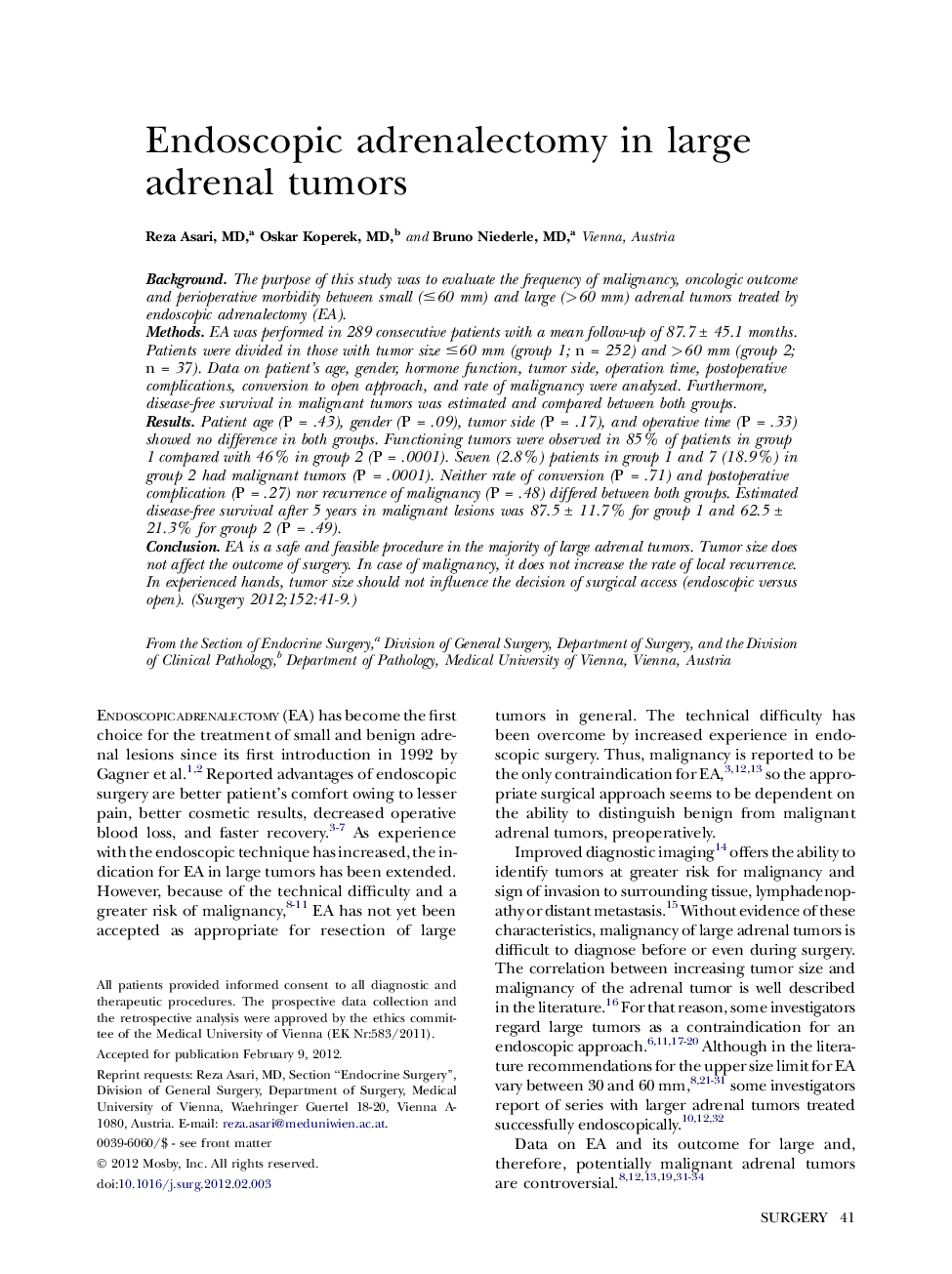| Article ID | Journal | Published Year | Pages | File Type |
|---|---|---|---|---|
| 4307975 | Surgery | 2012 | 9 Pages |
BackgroundThe purpose of this study was to evaluate the frequency of malignancy, oncologic outcome and perioperative morbidity between small (≤60 mm) and large (>60 mm) adrenal tumors treated by endoscopic adrenalectomy (EA).MethodsEA was performed in 289 consecutive patients with a mean follow-up of 87.7 ± 45.1 months. Patients were divided in those with tumor size ≤60 mm (group 1; n = 252) and >60 mm (group 2; n = 37). Data on patient's age, gender, hormone function, tumor side, operation time, postoperative complications, conversion to open approach, and rate of malignancy were analyzed. Furthermore, disease-free survival in malignant tumors was estimated and compared between both groups.ResultsPatient age (P = .43), gender (P = .09), tumor side (P = .17), and operative time (P = .33) showed no difference in both groups. Functioning tumors were observed in 85% of patients in group 1 compared with 46% in group 2 (P = .0001). Seven (2.8%) patients in group 1 and 7 (18.9%) in group 2 had malignant tumors (P = .0001). Neither rate of conversion (P = .71) and postoperative complication (P = .27) nor recurrence of malignancy (P = .48) differed between both groups. Estimated disease-free survival after 5 years in malignant lesions was 87.5 ± 11.7% for group 1 and 62.5 ± 21.3% for group 2 (P = .49).ConclusionEA is a safe and feasible procedure in the majority of large adrenal tumors. Tumor size does not affect the outcome of surgery. In case of malignancy, it does not increase the rate of local recurrence. In experienced hands, tumor size should not influence the decision of surgical access (endoscopic versus open).
